In a year of anniversaries, from Harley-Davidson's 120th to BMW's 100th, there's a New England tradition hitting 100 this year: The Loudon Classic race, which bills itself as the longest running motorcycle race in the country, and the broader Laconia Motorcycle Week rally surrounding it that calls itself the world's oldest motorcycle rally.
Organizers have made sure the "The 100th Annual Loudon Classic" on June 17 at New Hampshire Motor Speedway will be the biggest in the race's history. This year's Loudon Classic features a $250,000 purse with a $55,000 prize for first place, making it the richest motorcycle road race in U.S. history. While no longer part of the MotoAmerica/AMA Superbike Championship, that purse is attracting many of MotoAmerica's top stars, such as Josh Hayes, Josh Herrin, Richie Escalante, Teagg Hobbs, Jake Lewis, Brandon Paasch, Tyler Scott, and Cody Wyman, to name a few. It undoubtedly will be the deepest field of riders to participate in the Loudon Classic since the race was last part of the AMA Superbike Championship in 2001.
While racing was the focal point of Laconia's Bike Week for decades, it didn't start out that way. The first gathering of motorcyclists to the region dates to the late 1910s and at first it was simply a destination for Boston area riders to get away for a three-day weekend. The roughly 100-mile distance was a challenge but became more and more doable, with motorcycles of the late 1910s and early '20s becoming ever more reliable and powerful.
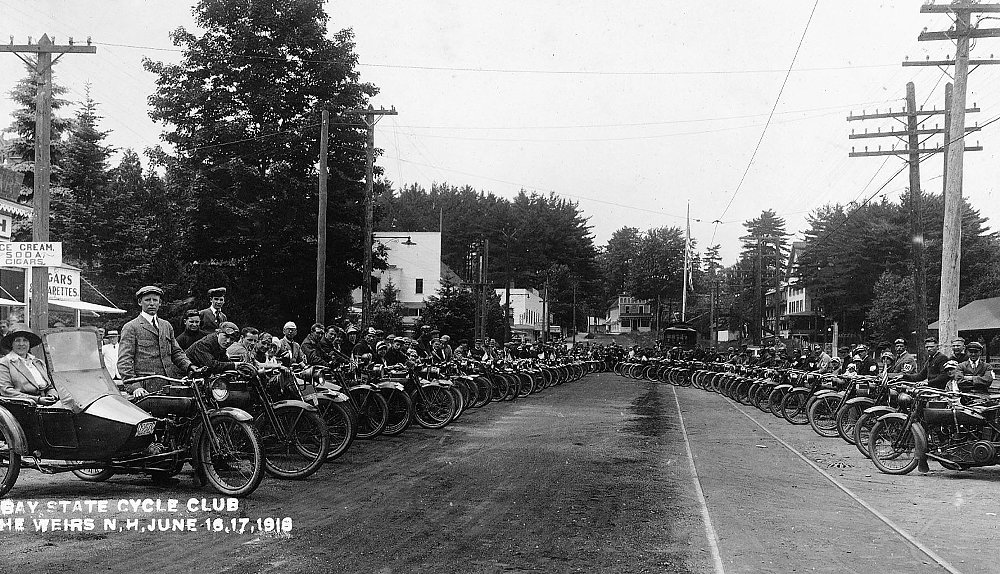
History of the Laconia rally
The Laconia rally dates back to its origins as the Gypsy Tours inaugurated by the Federation of American Motorcyclists (F.A.M) in 1917. The rally grew in popularity over the years, at its peak attracting riders from all corners of the nation and gaining significant media attention.
The Gypsy Tours, organized by the F.A.M, were a series of motorcycle rides that brought together motorcyclists from different regions to explore new areas and enjoy the company of fellow riders. The Massachusetts Motorcycle Association (MMA) played a significant role in the development of what was at first called the New England Gypsy Tour. An informal rider gathering on the western shores of Lake Winnipesaukee at Weirs Beach in 1916 was so popular that it led to an MMA organized ride, part of the F.A.M. Gypsy Tour in 1917.
A 1918 description of the route was published in Motorcycle and Bicycle Illustrated. It noted: "The route (originating in Park Square in Boston) will be by way of Lowell, along the famous Merrimac Valley, through Nashua, Manchester, Concord, Franklin, Tilton to the Weirs. At Concord a stop will be made for lunch and a beautiful grove has been selected at this place, where a picnic will be held. At Weirs the party will make their headquarters at the Hotel Weirs, and Sunday evening after dinner there will be a moonlight sail on Lake Winnipesaukee."
More than 200 riders took part in the 1918 edition of the ride with 50 additional riders joining the group in Nashua, N.H.
Racing arrives
The rally continued primarily as a ride and campout gathering throughout the 1920s and most of the 1930s. As the AMA's Class C production-based racing gained in popularity in the 1930s, Springfield (Mass.) Indian motorcycle dealer Fritzie Baer was instrumental in bringing the New England National TT event to the Belknap Recreational Area near Laconia. Interestingly, Baer later left Indian to become managing director of the Belknap Park. In that capacity, he promoted the Laconia road races through 1963.
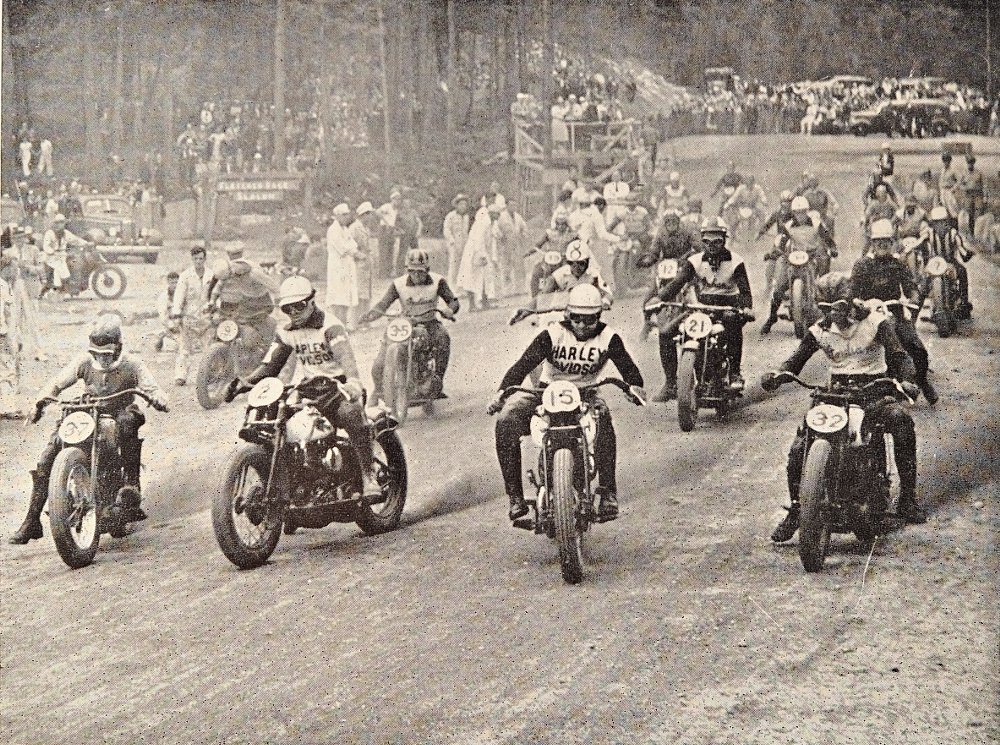
After running in various locations such as Keene, New Hampshire and Old Orchard Beach, Maine (on a beach course), the New England National TT found its permanent home at Belknap. The move to Laconia marked a turning point for the rally as well, as Belknap provided riders with a scenic backdrop and a welcoming venue. The race grew steadily, but then absolutely exploded in popularity when it resumed after World War II. Images of the race in the 1940s and ‘50s show massive throngs of fans crowded around the length of the wooded circuit. Word of the race spread, and the CBS television network made Laconia one its earliest annual sporting events it covered.
The growing success of the Laconia Motorcycle Rally caught the attention of the national media, further solidifying its reputation as a premier motorcycle event. News outlets began covering the rally, highlighting the unique camaraderie, thrilling races, and the vibrant atmosphere that surrounded the event. The coverage helped spread the word about the rally and drew even more participants.
In addition to the races, the rally featured a variety of associated events, including the thrilling hillclimb at Belknap Recreation Area. The hillclimb became a favorite among riders, challenging their skills and providing spectators with jaw-dropping moments as motorcycles ascended the steep incline.
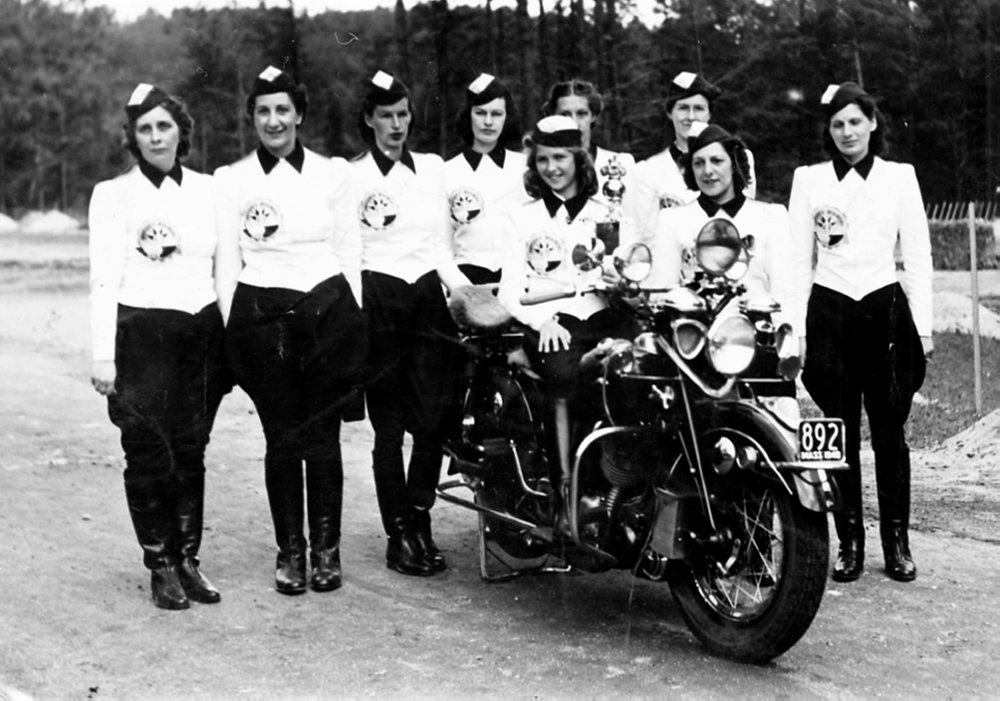
However, the rally experienced a setback in 1965 with the infamous Weirs Beach Riots. Rowdy bikers overturned cars and started fires, clashing with local police and the state police and National Guard troops called in for backup. The riots tarnished the event's reputation and caused residents to sour on the rally for a time. Nevertheless, the rally persevered and gradually regained the trust and support of the community.
A new racing venue in Loudon
The 1965 riots overshadowed the move from Belknap to the newly constructed Bryar Motorsport Park, in nearby Loudon. The 1.6-mile road racing circuit took some getting used to by fans who had grown fond of the old Belknap track, but the new facility provided a dedicated road racing circuit for the event, allowing riders to showcase their skills in a safer and more controlled environment. The races held at Bryar Motorsport Park became a focal point and prime camping spot of the rally, with overflow crowds of more than 30,000 some years.
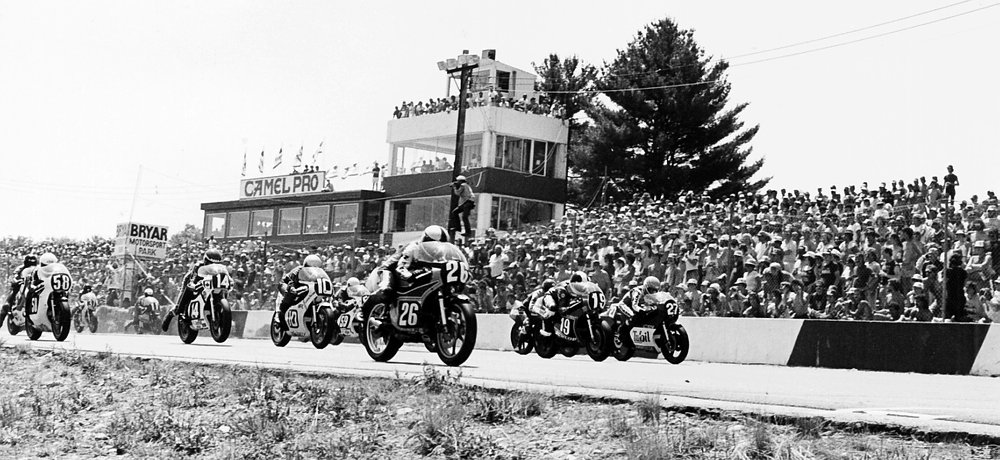
The Loudon Classic motorcycle races have always been a showcase for the talent and skill of riders from various backgrounds. One noteworthy aspect of the Loudon Classic is the remarkable performance of local riders, who often outshined the AMA series regulars over the years. Among these exceptional riders were names like Mike Baldwin, Rich Schlachter, Dale Quarterley, David Sadowski, John Bettencourt, Gerald Rothman, Scott Greenwood, and others who added to the fan appeal and left an indelible mark on the event's history.
Loudon gained a reputation for the wild atmosphere that encompassed the event. Riders camped in the woods surrounding the track, and when the sun went down the craziness began. One particular area of the camping grounds surrounding the track known as "Animal Hill" gained notoriety for its wild happenings, such as car and motorcycle burnings, dirt hill motorcycle drag races, and fireworks fights, sometimes all at once. Sticks of dynamite were set off and shook the entire area of the track and in the early hours of morning dawn, the smoke-filled woods took on the feel of a scene from the movie "Apocalypse Now."
With NASCAR's rapid rise in popularity in the 1980s, a priority for the track owner was to get a NASCAR event. The old Bryar Motorsport Park was eventually converted to make way for the construction of the New Hampshire Motor Speedway in 1990. While the new NASCAR venue brought state-of-the-art amenities, it also meant the loss of some of Loudon's traditional charm and character and crowds to the races began to diminish. Track safety became more of an issue as Superbikes continued to get faster and the AMA Superbike weekend was gone after 2001. While club races continued during the traditional weekend, the focus once again returned to the rally, as it was in the early days of the event.
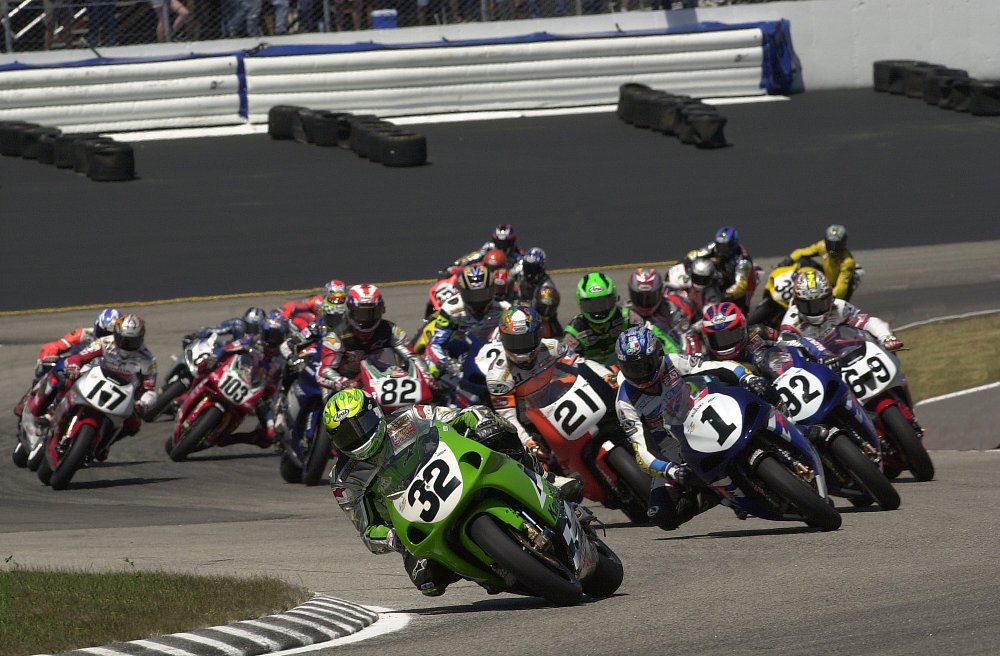
Laconia legacy
The Laconia Motorcycle Rally has had a significant economic impact on that region of New Hampshire, becoming a major contributor to the region's tourism industry.
This year, the Loudon Classic and Laconia Motorcycle Week are celebrating their 100th year (several years were missed during World War II). The event has come a long way since its humble beginnings as the Gypsy Tours and has survived a tumultuous history to claim the title of world's oldest motorcycle rally. Some will come to compete against the country's top professional road racers in the Loudon Classic, some will come to ride "the Kanc" and enjoy New Hampshire's White Mountains, and some will just come for the party at Weirs Beach. The one thing they all have in common, and has kept people coming here for a century, is the passion and sense of community that motorcycling embodies.










